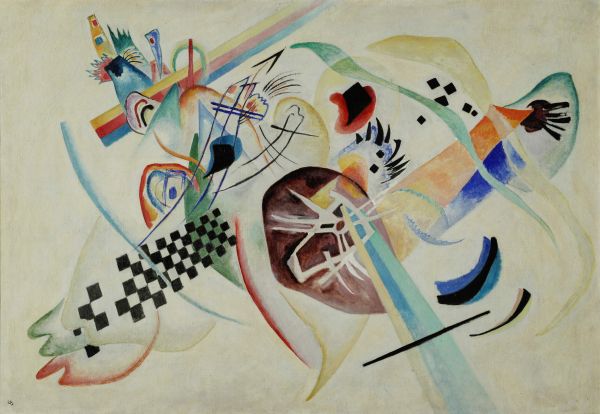|
|
On white (I). Composition No. 224. 1920

Kandinsky Vasili,
Oil on canvas
95 x 138
State Russian Museum
Annotation
In the early 1920s, Wassily Kandinsky painted a series of canvases dominated by the colour white. The artist himself wrote that white “is a symbol of a world from which all colour as a definite attribute has disappeared. This world is too far above us for its harmony to touch our souls. A great silence, like an impenetrable wall, shrouds its life from our understanding. White, therefore, has this harmony of silence, which works upon us negatively, like many pauses in music that break temporarily the melody. It is not a dead silence, but one pregnant with possibilities. White has the appeal of the nothingness that is before birth, of the world in the ice age.”
Author's Biography
Kandinsky Vasili
Kandinsky, Wassily (Vasily Vasilyevich)
1866, Moscow - 1944, Neuillysur-Seine (France)
Painter, graphic artist, book illustrator, writer on painting and poetry. Studied law and political economy at the Moscow University (1885-93). Studied art at Anton Aube's private studio (1896-97) and the Akademie Franz von Stuck in Munich (1900). One of the founders of the Phalanx group (1901), organised the Neue Kimst-lervereinigung in Munich (1909). Contributed to the exhibitions of the Jack of Diamonds (1910, 1912), Der blaue Reiter (1911-12) and Galerie Der Strum (1913). Worked for Department of An, People's Commissariat of Education (1918), headed the Museum of Painterly Culture in Moscow (1919-20). Emigrated to Germany (1921) and France (1933).

